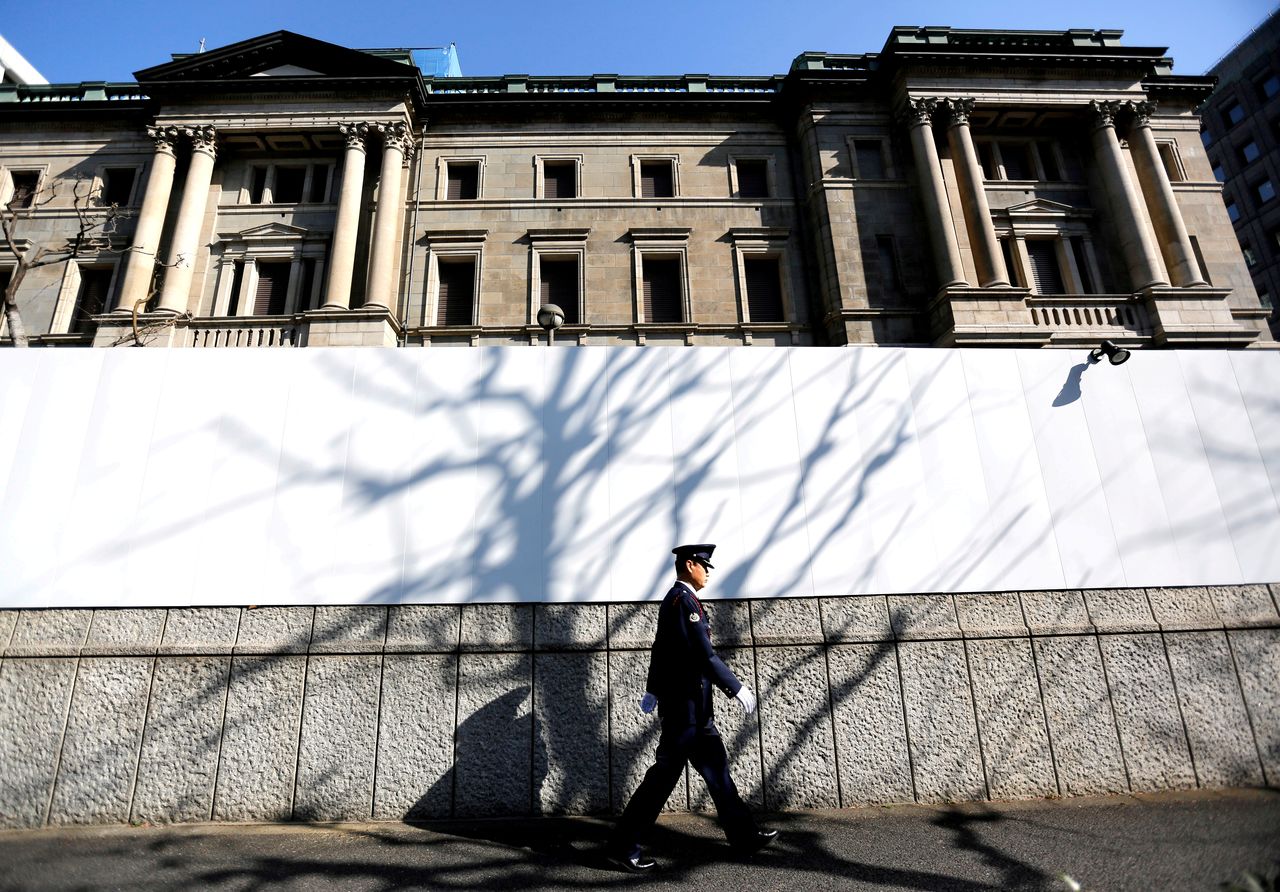BOJ has room to deepen negative rates with policy review, says ex-central banker
Newsfrom Japan
Economy- English
- 日本語
- 简体字
- 繁體字
- Français
- Español
- العربية
- Русский

FILE PHOTO: FILE PHOTO: A security guard walks past in front of the Bank of Japan headquarters in Tokyo, Japan January 23, 2019. REUTERS/Issei Kato
By Leika Kihara
TOKYO (Reuters) - The Bank of Japan’s policy review in March has made it easier for the central bank to deepen negative interest rates to combat any yen spike that threatens a fragile economic recovery, a former executive said on Monday.
As part of a review of its policy tools announced earlier this month, the BOJ created a scheme that pays up to 0.2% interest to financial institutions that tap its loan programmes.
The move was aimed at easing the strain that prolonged ultra-low interest rates had inflicted on financial institutions and dispelling dominant market views such side-effects would prevent the central bank from cutting rates further.
“With no means left to accelerate inflation to its 2% target, the BOJ’s focus has been to keep market stable. That’s something the BOJ can do and believes it must keep doing,” said Kazuo Momma, who retains close contact with incumbent policymakers.
“If changes in economic fundamentals trigger a sharp yen rise, the BOJ will surely eye deepening negative rates. Compared with before the BOJ conducted the review, it can more easily deepen negative rates,” he told Reuters in an interview.
Under a policy of yield-curve control (YCC), the BOJ guides short-term rates at -0.1% and the 10-year bond yield around 0% as part of efforts to prop up growth and inflation.
YCC, as well as years of asset buying, has failed to push inflation to the bank’s 2% target, forcing the BOJ to conduct the review to make its stimulus more sustainable.
In hopes of breathing life back into a market made dormant by its huge presence, the BOJ clarified in the review it would allow the 10-year yield to move up and down 0.25% around its target.
The 50-basis-point band was set based on the BOJ’s analysis that any fluctuation within the range wouldn’t hurt the economy.
“The BOJ is essentially saying it won’t intervene to halt any move up as long as yields move within the band,” Momma said. “It’s also saying fluctuations beyond the 50-point range would damage the economy, suggesting the band won’t be widened in the future.”
Such tweaks, however, fail to address the hard truth that years of money printing failed to achieve 2% inflation, said Momma, currently economist at Mizuho Research Institute.
“In Japan, inflation rarely hit even 1% in the past 25 years,” Momma said. “I don’t think COVID-19 has changed the fact structural factors will keep Japan’s prices persistently low.”
(Reporting by Leika Kihara, editing by Larry King)